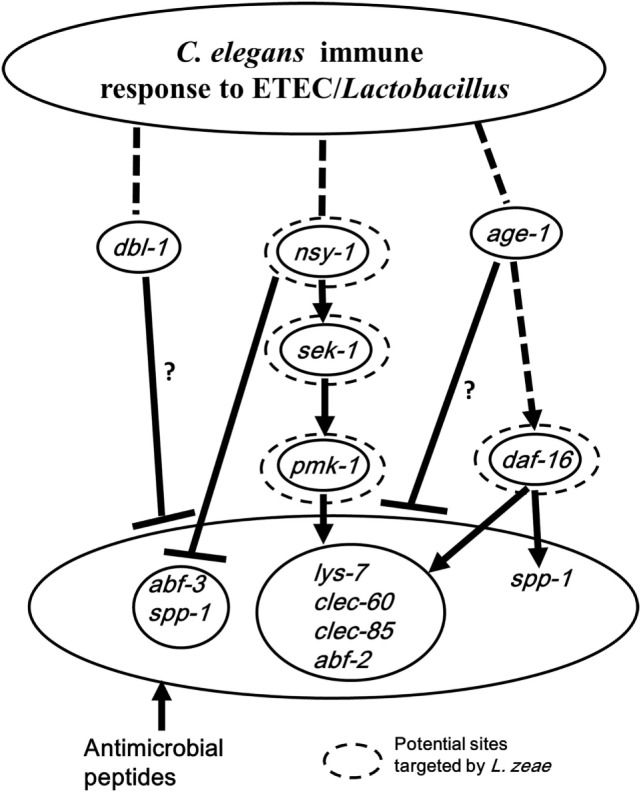Figure 6.

Schematic diagram speculating the immunomodulatory mechanism by Lactobacillus zeae. Pretreatment with L. zeae LB1 altered the production of antimicrobial peptides through the p38 mitogen-activated protein kinase (MAPK) and DAF/IGF pathways of cell signaling, therefore, changed the resistance of Caenorhabditis elegans to Enterotoxigenic Escherichia coli (ETEC) infection. The hypothesis was based on the data of both life-span assays and gene expression of various C. elegans mutants either pretreated or not treated with L. zeae LB1 before the ETEC infection. While dashed lines represent the cascades described in previous literatures, solid lines indicate the effects observed in the present study. ▾, Upregulation; ┴, downregulation. Dashed circle: potential functional sites in the cell signaling targeted by L. zeae LB1. ?, Indicating that the regulation could be direct or indirect. More specifically, the downregulation in the production of antimicrobial peptides could be controlled by dbl-1 or age-1 directly or through pmk-1 and sek-1 in the p38-MAPK pathway in the wild-type nematode (Figures 5C,D).
